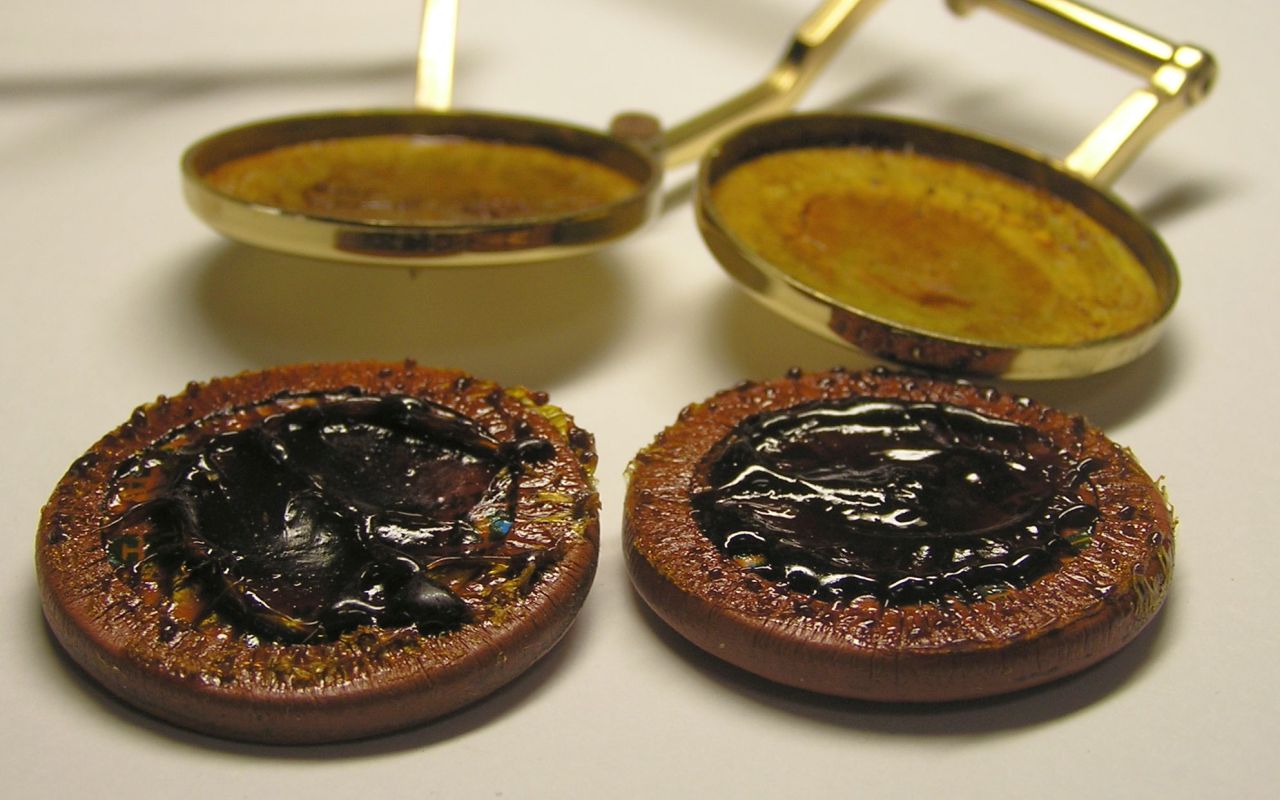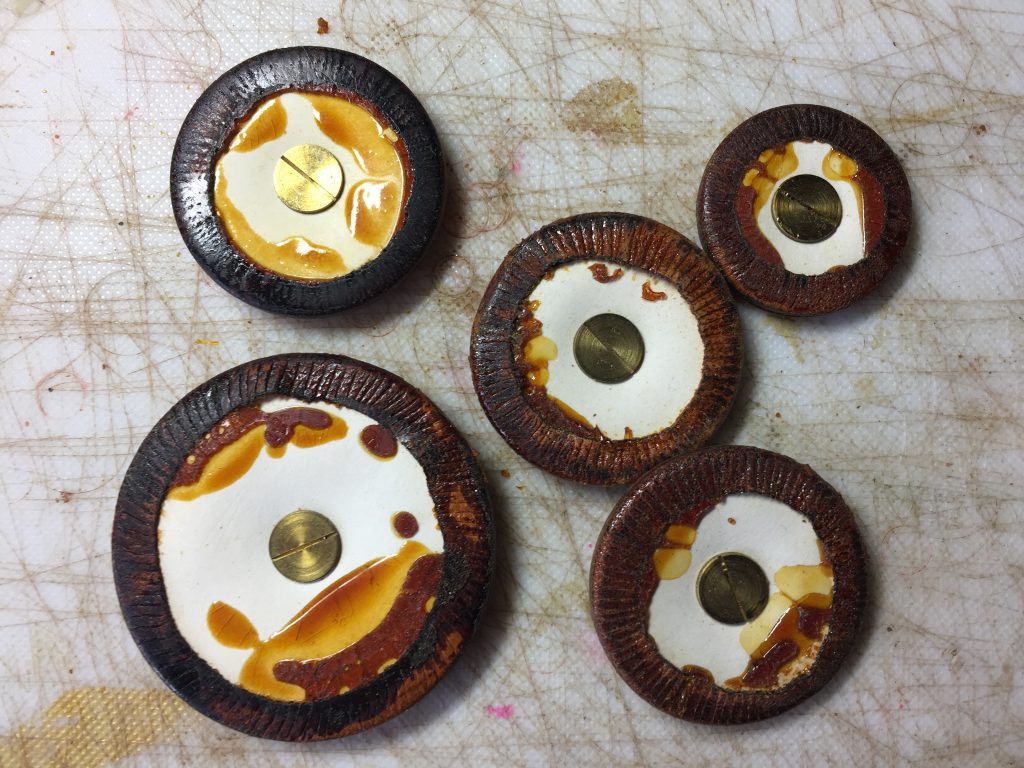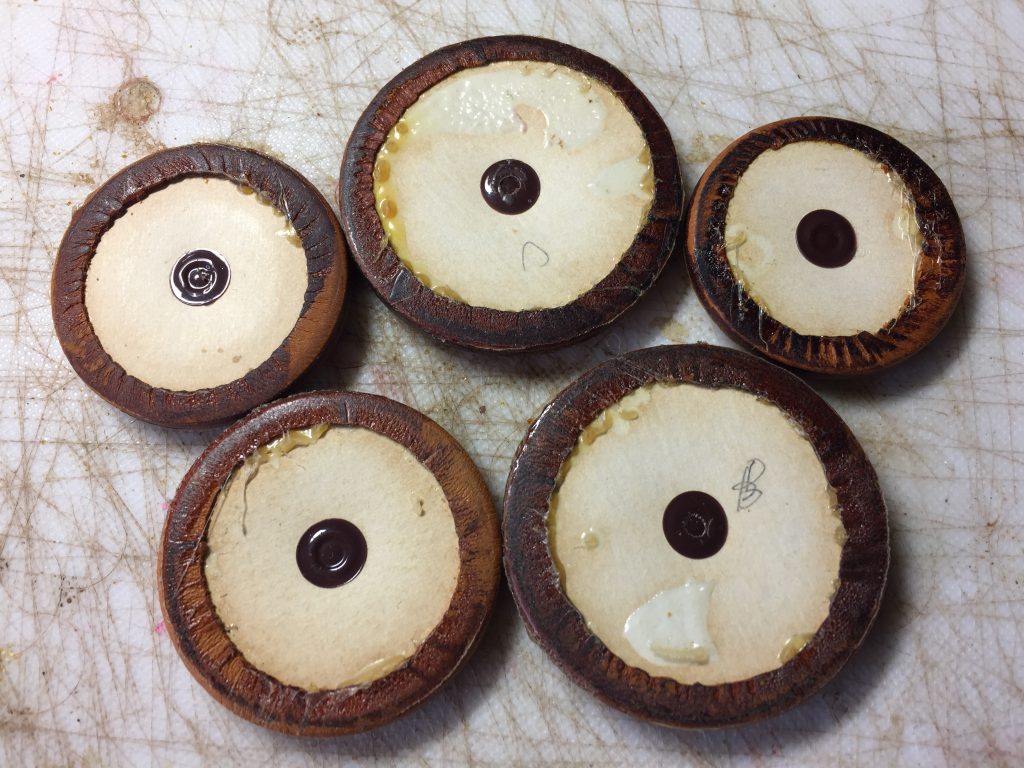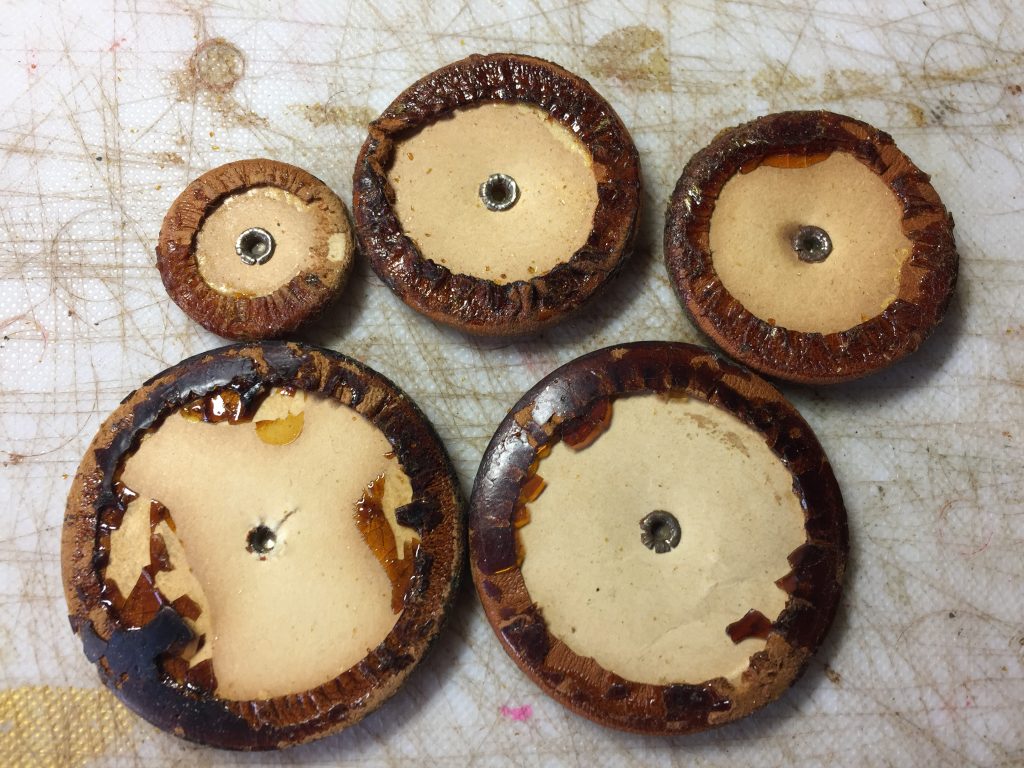“FLOATING” IS WIDELY USED
Many repairers ( and many modern manufactures ) install saxophone pads by a method called “floating” (float padding). “Floating” is to make a layer of shellac on a key cup and float a pad on it. A large amount of shellac is used to fulfill the space between the key cup and the pad. Repairers can adjust the inclination of pads easily, so the method is widely used.
I think that “floating” has a serious defect. It cancel the function of sax resonators, and it makes the tone thin.

RESONATORS MUST BE ELASTIC
Resonators are objects that vibrate in response to other vibrations. So resonators must be elastic. The sound board of the piano and violin and guitar, the resonator of the “resonator guitar”, the microphone diaphragm, all resonators are elastic.
For example, the sound board of piano is a thin board. Its thickness is only 8MM. So it has the elasticity, and it can resonate with the vibration of piano strings.
SAX PAD NEEDS A HOLLOW SPACE ON THE BACK SIDE
King, Martin, Selmer, Conn….. many old manufacturers used a small amount of shellac to attach pads. It was to make a space between the pad and the key cup. (It seems that Selmer still installs pads in this way.)
These are original pads from vintage saxophones. You can find a little shellac was used.
(1. Selmer Mark VI 2. Selmer Mark VII 3. Vintage Martin)
When you press the original resonator, it moves slightly. And you can find it is elastic. So the resonator can resonate with the vibration of the air column. It looks like a microphone diaphragm or a speaker cone. If there is no hollow space on the back side of the resonator, it is not elastic and does not resonate.
MANY SAXOPHONES LOST RESONANCE
In “floating”, there is no space between the pads and the cups. So currently, most of the sax resonators make no resonance. I think that many repairers ( and many modern manufacturers ) think that the pad center disks are reflectors. And they think that the cup spaces of the old saxes were made mistakenly.
ACOUSTIC ROLE OF THE PAD RESONATORS
When you make hollow spaces in the key cups, you will find that the resonators work and enrich the tone. You can get more complicated tone with much overtones. And you will also find that the type of the material of the resonators changes the tone. Many repairers and players can not find the difference in material because quite a lot resonators aren’t working.
PADS NEED “BURN IN”
“Padding with space” have an additional feature. Pads need long time “burn-in” (break-in) like speaker cones. The pads just after installation make only small resonance oviously. I think it is because that the back cardboards of the pads are not used to resonate. To get good resonance, players must have time and patience and skill.
THE ROLE OF SAX PAD RESONATOR WAS FORGOTTEN
I think “floating” was begun as a simple method to install pads quickly. It was also convenient for players because it was unnecessary to spend time for “burn-in”. It was easy both for players and for engineers. But engineers changed generations, the function of the pad resonator was forgotten. And many saxophones lost their original rich tone.



